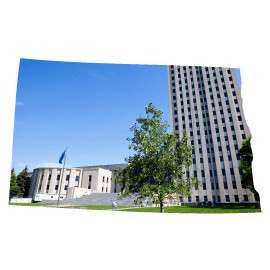Alternate Route Usage and Providers: North
Dakota
Expanding the Pool of Teachers Policy
Analysis of North Dakota's policies
North Dakota does not currently offer any alternate routes to licensure.
Recommendations for North Dakota
Establish an alternate route to licensure.
The state should develop a genuine alternate route to licensure that is free from regulatory obstacles that inappropriately limit its usage and providers. An alternative pathway can help broaden and deepen the available pool of teachers, particularly in the fields of mathematics and science.
State response to our analysis
North Dakota disagreed with this analysis but did not offer any further explanation.
Select another topic
Delivering Well Prepared Teachers
- Admission into Preparation Programs
- Elementary Teacher Preparation
- Elementary Teacher Preparation in Reading Instruction
- Elementary Teacher Preparation in Mathematics
- Middle School Teacher Preparation
- Secondary Teacher Preparation
- Secondary Teacher Preparation in Science
- Secondary Teacher Preparation in Social Studies
- Special Education Teacher Preparation
- Assessing Professional Knowledge
- Student Teaching
- Teacher Preparation Program Accountability
Expanding the Pool of Teachers
Identifying Effective Teachers
- State Data Systems
- Evaluation of Effectiveness
- Frequency of Evaluations
- Tenure
- Licensure Advancement
- Equitable Distribution
Retaining Effective Teachers
Exiting Ineffective Teachers
Research rationale
From a teacher quality perspective—and supporting NCTQ's contention for broad-based, respectable, and widely-offered programs—there exists substantial research demonstrating the need for states to adopt alternate certification programs. Independent research on candidates who earned certification through the alternate-route Teach For America (conducted by Kane, Parsons and Associates) and the American Board for Certification of Teacher Excellence (conducted by Mathematica Policy Research, Inc. and ABCTE) programs has found that alternate route teachers are often as effective, and, in many cases, more effective, than traditionally-prepared teachers. See also Raymond, M., Fletcher, S., & Luque, J. (2001). Teach for America: An evaluation of teacher differences and student outcomes in Houston, Texas. Stanford, CA: The Hoover Institution, Center for Research on Education Outcomes.
Specifically, evidence of the effectiveness of candidates in respectable and selective alternate certification requirements can be found in J. Constantine, D. Player, T. Silva, K. Hallgren, M. Grider, and J. Deke, An Evaluation of Teachers Trained Through Different Routes to Certification, Final Report. National Center for Education Evaluation and Regional Assistance, Institute of Education Services, U.S. Department of Education (2009), D. Boyd, et al. "How Changes in Entry Requirements Alter the Teacher Workforce and Affect Student Achievement." Education Finance and Policy, (2006). T. Kane, J. Rockoff, and D. Staiger. "What Does Certification Tell Us About Teacher Effectiveness? Evidence from New York City." National Bureau of Economic Research. (2006).
A number of studies have also found alternative-certification programs such as Teach for America to produce teachers that were more effective at improving student achievement than other teachers with similar levels of experience. See Z. Xu, J. Hannaway and C. Taylor, "Making a Difference? The Effects of Teach for America in High School." The Urban Institute/Calder. (2009); D. Boyd et al "Recruiting Effective Math Teachers, How Do Math Immersion Teachers Compare? Evidence from New York City." Calder Institute (2009).
For evidence that alternate route programs offered by institutions of higher education are often virtually identical to traditional programs, see Alternative Certification Isn't Alternative (NCTQ, 2007) at: http://www.nctq.org/p/publications/docs/Alternative_Certification_Isnt_Alternative_20071124023109.pdf.

